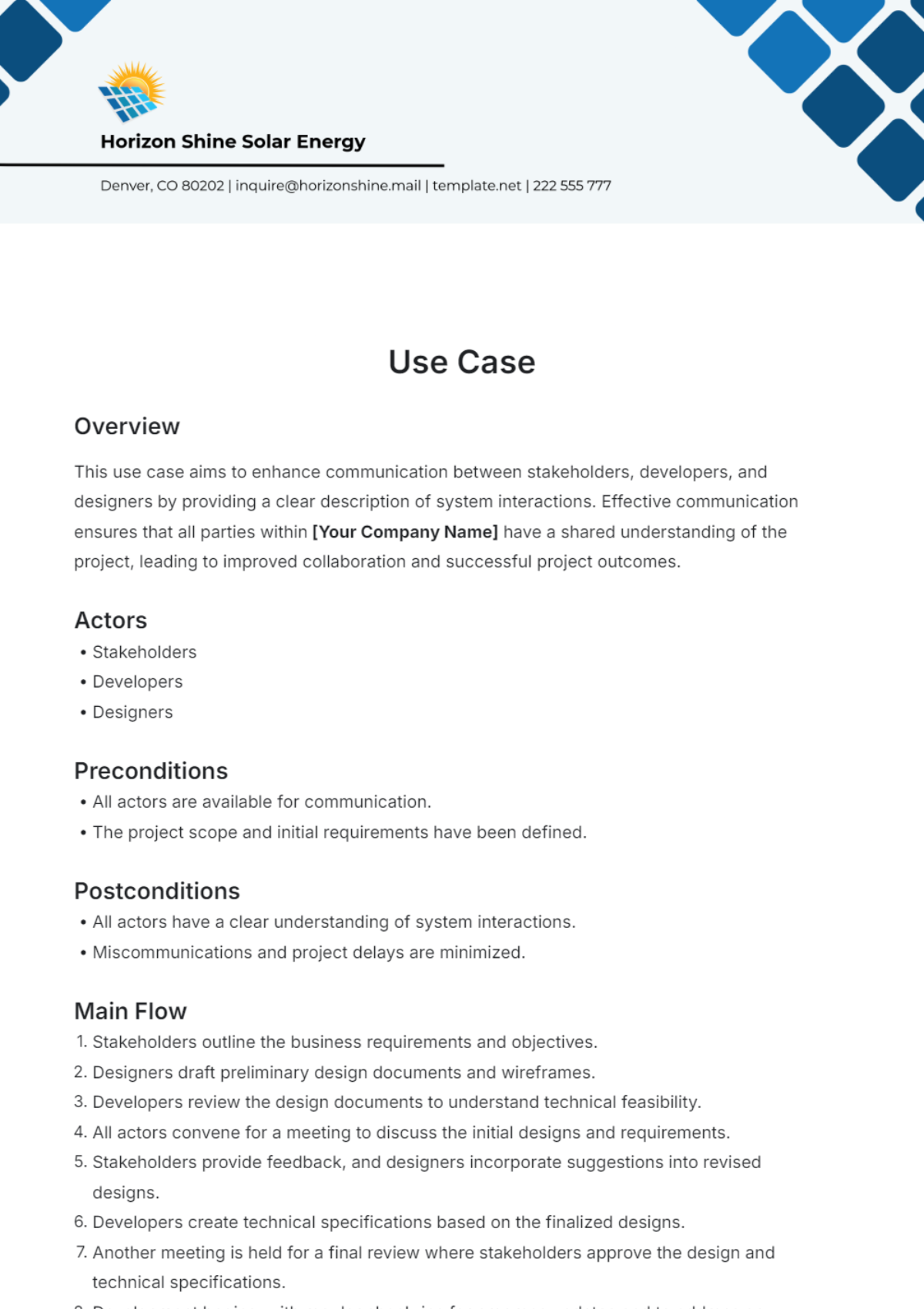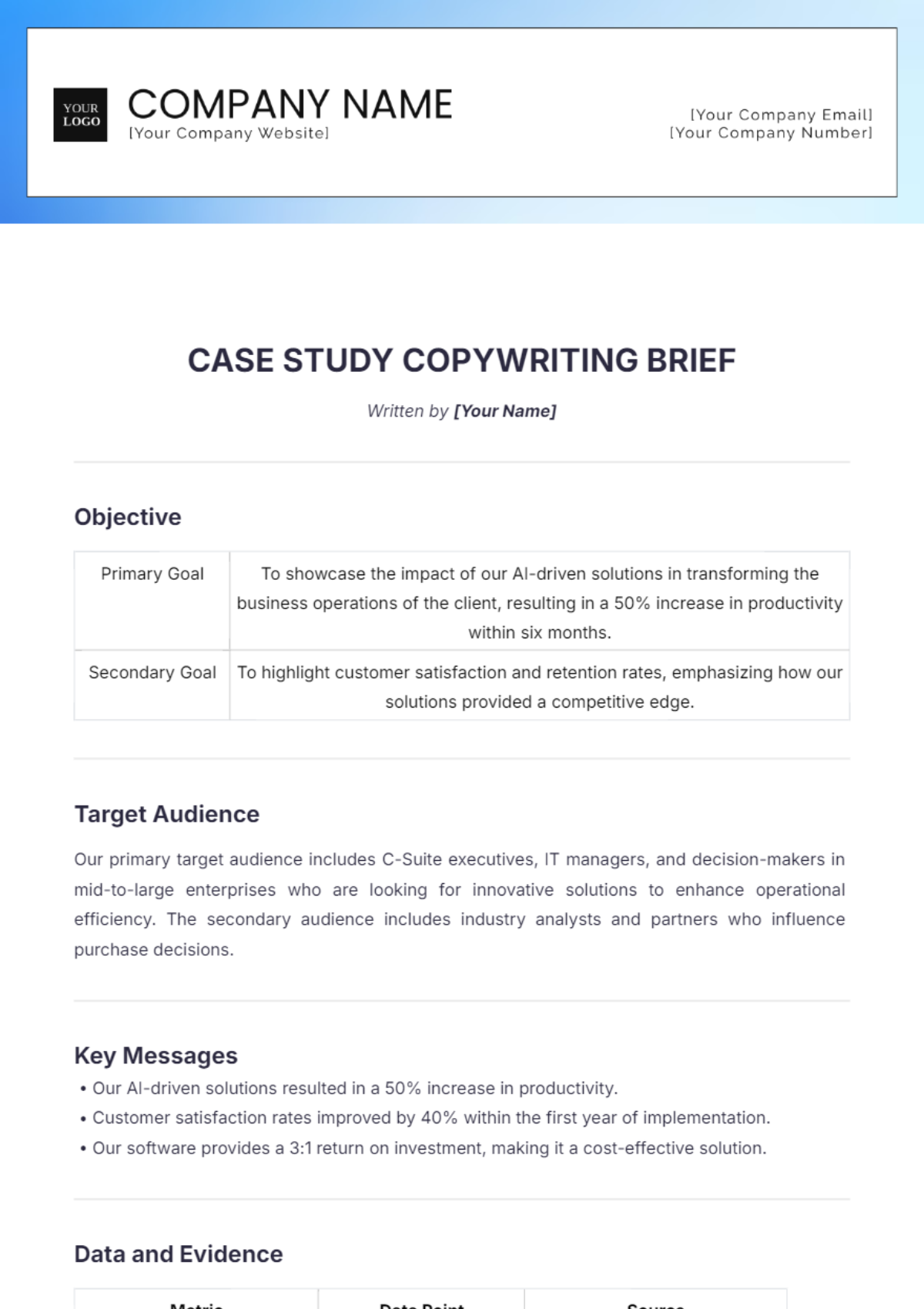Warehouse Case Study
I. Introduction
In this section, provide an overview of the case study, including the objective, scope, and significance of examining the specific aspect of warehouse operations. Introduce [Your Company Name]'s warehouse operations and the context within which the analysis was conducted.
[Your Company Name] sought to enhance its warehouse operations to improve overall efficiency and optimize inventory management strategies. The case study delves into the challenges encountered, solutions devised, and outcomes achieved in this endeavor. It aims to provide valuable insights for other organizations grappling with similar warehouse management issues.
II. Background
This section provides background information on [Your Company Name]'s warehouse operations, detailing its size, scope, and existing processes.
A. Overview of [Your Company Name]'s Warehouse Operations
Total warehouse area: [Provide square footage or metric]
Annual throughput: [Volume or units processed annually]
Types of products handled: [Specify categories or types]
Existing warehouse management system (WMS): [Name and version]
B. Challenges Faced
Identify the key challenges encountered in warehouse operations before implementing improvements.
Inefficient picking and packing processes lead to delays
Poor inventory visibility resulting in stockouts and overstock situations
Manual data entry leads to errors in order fulfillment
III. Solutions Implemented
This section outlines the strategies and solutions [Your Company Name] implemented to address the identified challenges and enhance warehouse operations efficiency.
A. Technology Integration
Warehouse Management System (WMS) Upgrade: Upgraded to a cloud-based WMS with advanced features such as real-time inventory tracking and automated order processing.
Barcode Scanning: Implemented barcode scanning technology to improve accuracy in inventory management and order fulfillment processes.
Internet of Things (IoT) Sensors: Installed IoT sensors to monitor environmental conditions within the warehouse, ensuring optimal storage conditions for perishable goods.
B. Process Optimization
Revised Layout: Restructured warehouse layout to streamline material flow and reduce travel time for pickers.
Batch Picking: Introduced batch picking process to optimize picking routes and minimize order fulfillment time.
Standard Operating Procedures (SOPs): Developed and implemented SOPs for various warehouse processes to ensure consistency and minimize errors.
IV. Outcomes Achieved
Evaluate the outcomes and impacts of the implemented solutions on [Your Company Name]'s warehouse operations.
A. Key Performance Indicators (KPIs)
Order Fulfillment Time: Reduced by 30% due to optimized processes and technology integration.
Inventory Accuracy: Improved from 85% to 98% with the implementation of barcode scanning and WMS upgrades.
Employee Productivity: Increased by 20% as a result of streamlined workflows and reduced manual tasks.
B. Cost Savings
Labor Costs: Reduced overtime expenses by 15% through improved efficiency and optimized resource allocation.
Inventory Holding Costs: Decreased by 10% due to better inventory visibility and management, reducing excess inventory levels.
V. Conclusion
Summarize the key findings and insights gained from the case study, emphasizing the significance of implementing innovative solutions in warehouse operations.
[Your Company Name] successfully transformed its warehouse operations through the adoption of technology and process optimization strategies. The outcomes achieved not only improved operational efficiency but also contributed to cost savings and enhanced customer satisfaction. This case study serves as a valuable reference for organizations seeking to optimize their warehouse management practices and achieve sustainable growth.
VI. Appendix
Include any supplementary information, data, or resources that support the case study analysis.
A. Additional Data Analysis
Provide detailed data analysis, charts, or graphs illustrating key performance metrics before and after implementing solutions.
B. Testimonials
Include testimonials from warehouse staff, management, or customers highlighting the impact of the implemented changes on their experience.
C. References
List any references, research papers, or external sources consulted during the preparation of the case study. Ensure proper citation formatting.
Prepared By:
[YOUR NAME]
[YOUR POSITION]
[YOUR COMPANY NAME]
Contact Information:
[Your Email]
[Your Company Number]
[Your Company Website]
[Your Company Address]

















































